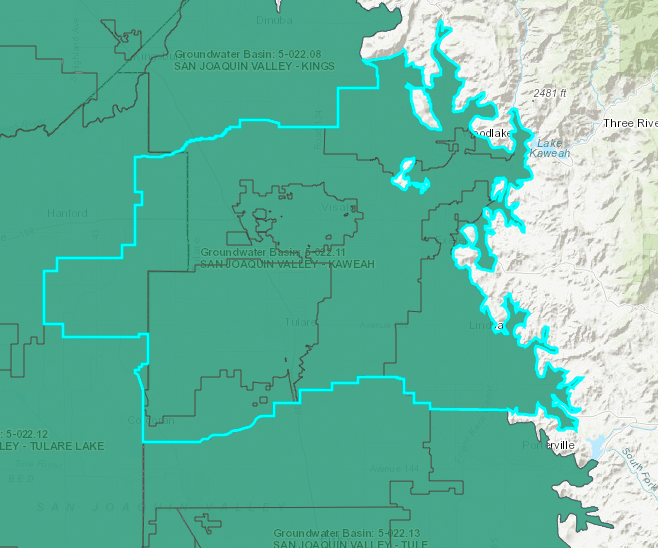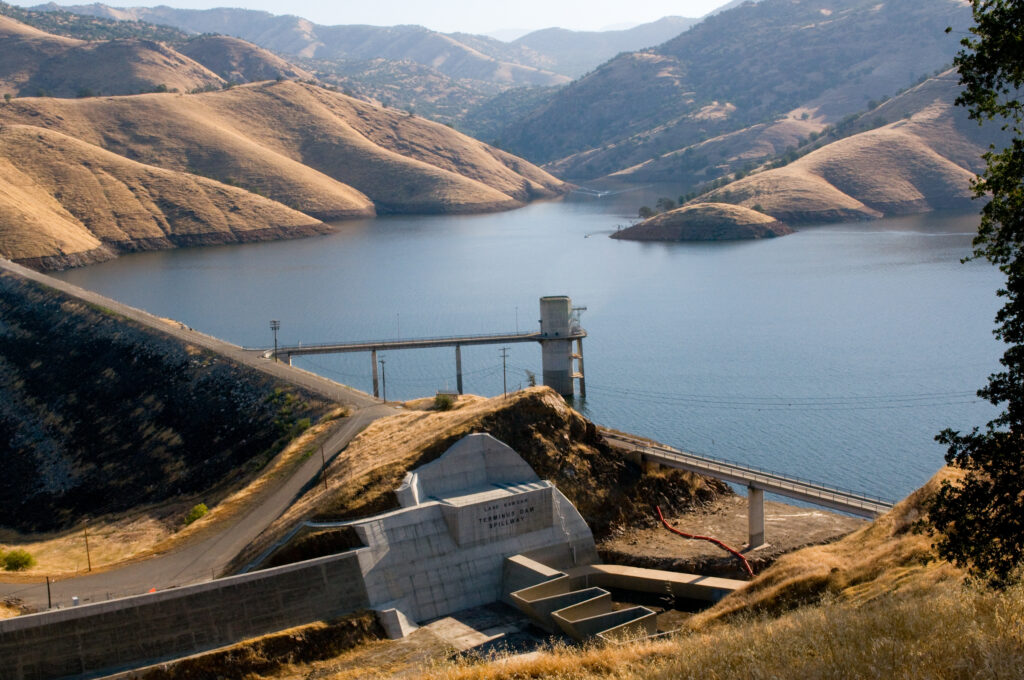Tulare County farmers used to pumping groundwater at will are coming to the harsh reality that those days are numbered.
For some, they’re already over.
Pumping caps have been, or soon will be, implemented in all three groundwater sustainability agencies in the Kaweah subbasin,.
“I’d say the reaction has been positive. Positively terrible,” said Mike Hagman, director of the East Kaweah Groundwater Sustainability Agency. “Overall, it’s been ‘Man, oh mighty, this is going to be a killer.'”
The Madera County Groundwater Sustainability Agency is the only other groundwater management agency that has proposed pumping limits for its growers. But Madera County is one out of seven groundwater sustainability agencies covering the Madera subbasin. The other six GSAs haven’t instituted limits. That disparity has created its own strife among farmers, some of whom feel restrictions should be spread equally, as SJV Water reported in a video posted earlier this week.
Kaweah will be the first entire subbasin to limit how much groundwater farmers can use and it will be across the board, regardless of how much surface water some growers may receive.

Kaweah groundwater managers will determine groundwater use by monitoring evapotranspiration from growers’ fields. Evapotranspiration (ET) is the amount of water used by plants and can be measured using satellites. Water managers will calculate each grower’s total ET, then deduct surface water and rainfall giving them a net estimate of ET from groundwater use.
Eventually, the goal is to get groundwater use across the basin down to about .85 acre feet per acre.
But each groundwater agency is setting its own caps and following its own timeline, which has led to some finger pointing.
Farmers in the East Kaweah groundwater agency are feeling the bite soonest and deepest.
That agency set annual groundwater caps at 1.65 acre feet per acre and did so retroactive to October 1, 2021, according to an “urgent policy notice.” Growers will pay $500 per acre foot for every acre foot over that cap. Part of the 1.65 acre foot allotment are two temporary amounts that will go away by 2035, or much sooner, bringing the eventual groundwater use cap down to .85 acre feet per acre, according to East Kaweah’s Hagman.
The Mid Kaweah GSA is proposing its growers be limited initially to 2.5 acre feet per acre. That will go into effect in March or April, said Aaron Fukuda, Director of Mid-Kaweah. There will also be a penalty of $500 per acre foot over the cap as well as a commensurate loss of allocation in the following year.
“It’s still a proposal but we’re working on an emergency ordinance in response to current groundwater depths,” Fukuda said. Groundwater in the region dropped significantly during the drought.
Meanwhile, the Greater Kaweah GSA likely won’t implement its groundwater cap until October 2022, said Director Eric Osterling. Greater Kaweah’s proposed cap could be 2.5 to 3 acre feet per acre, some of which would be a temporary allocation ratcheted down over time. Similar to Mid Kaweah, it is also considering a $500-per-acre-foot penalty and allocation loss in the following year for growers who go over the cap.
Greater Kaweah’s longer timeline has upset some growers who are facing larger reductions sooner.
“A lot of people aren’t happy about that,” East Kaweah’s Hagman said “I know the other GSAs are working at this, but their condition isn’t as grim as ours.”
The East Kaweah GSA is tucked up against the foothills of the Sierra Nevada mountain range and its soil is much thinner, meaning the area has less groundwater storage capability, Hagman said.
Even at 1.65 acre feet per acre, he said, that will be too great a pull on the area’s groundwater.
“It’s going down,” he said of groundwater levels, which are rapidly headed to what’s known as the “minimum threshold” level under the Sustainable Groundwater Management Act. Those thresholds are supposed to be set high enough to protect shallower drinking water wells in the area.
Greater Kaweah’s Osterling said he understands concerns that his GSA isn’t being strict enough or moving fast enough on groundwater use caps, but said Greater Kaweah also has a much larger percentage of “white lands,” or lands outside of surface supply irrigation districts. White land farmers rely almost exclusively on groundwater. Both East and Mid Kaweah GSAs include large irrigation districts that both get water from the Friant Division of the Central Valley Project.
“It is a contentious issue,” Osterling said. “The drought has accelerated things but we’re progressing the way we need to, with input from growers and bringing them into the process instead of springing a final proposal on them.”
Share this:
- Click to share on Facebook (Opens in new window)
- Click to share on Twitter (Opens in new window)
- Click to share on LinkedIn (Opens in new window)
- Click to share on Reddit (Opens in new window)
- Click to share on Tumblr (Opens in new window)
- Click to share on Pinterest (Opens in new window)
- Click to share on Pocket (Opens in new window)
- Click to share on Telegram (Opens in new window)
- Click to share on WhatsApp (Opens in new window)
- Click to print (Opens in new window)








You must be logged in to post a comment.